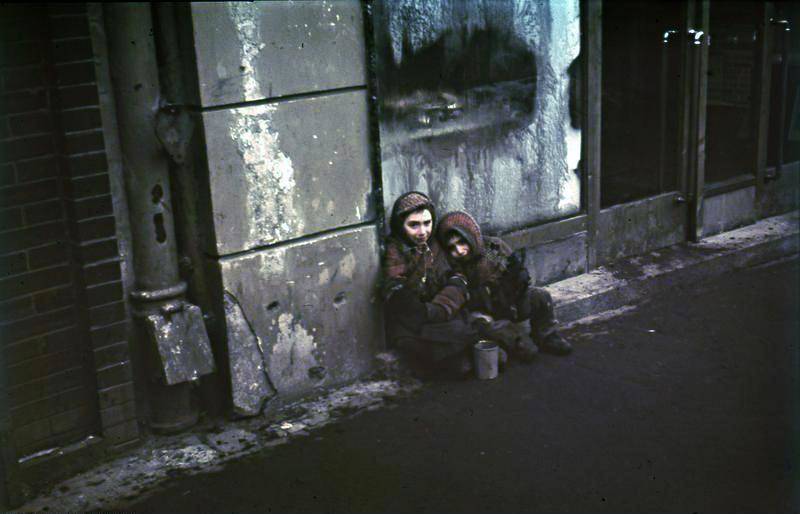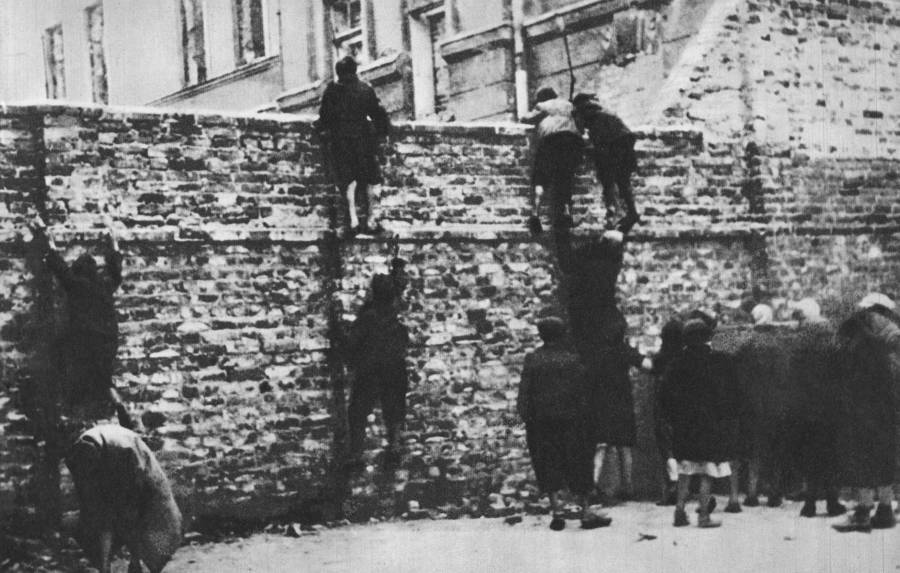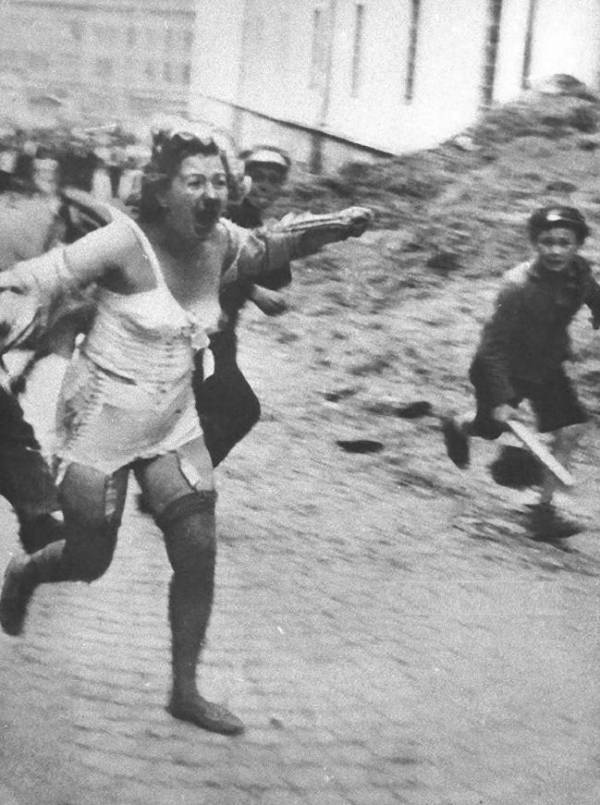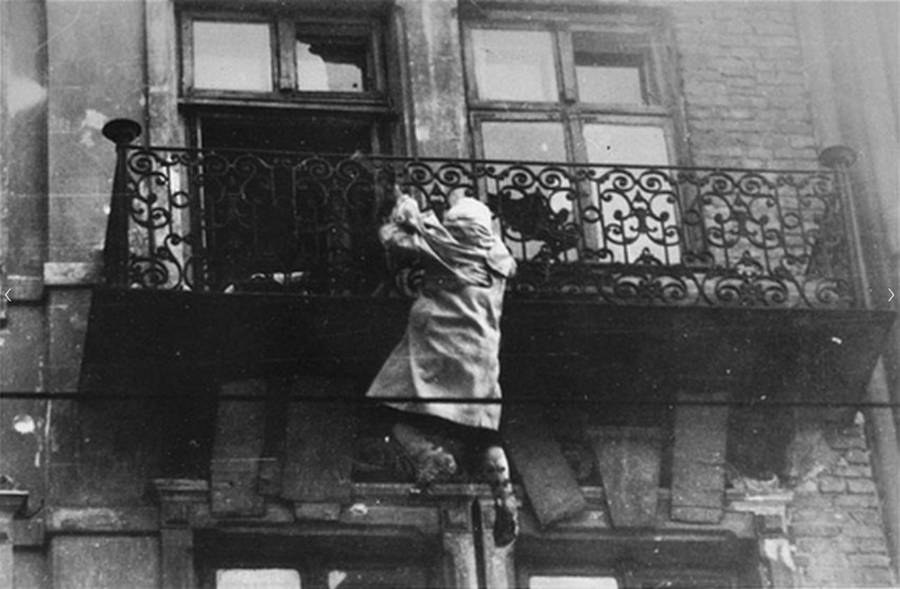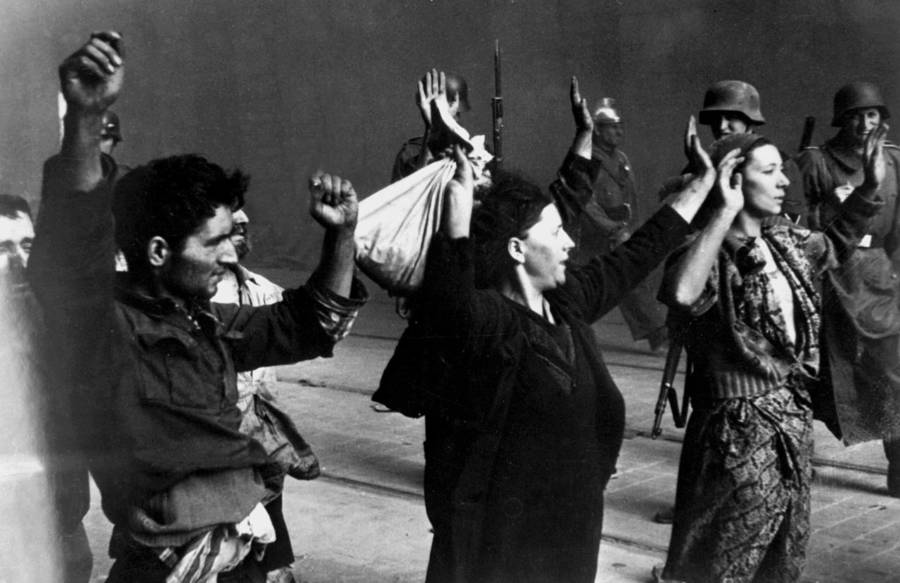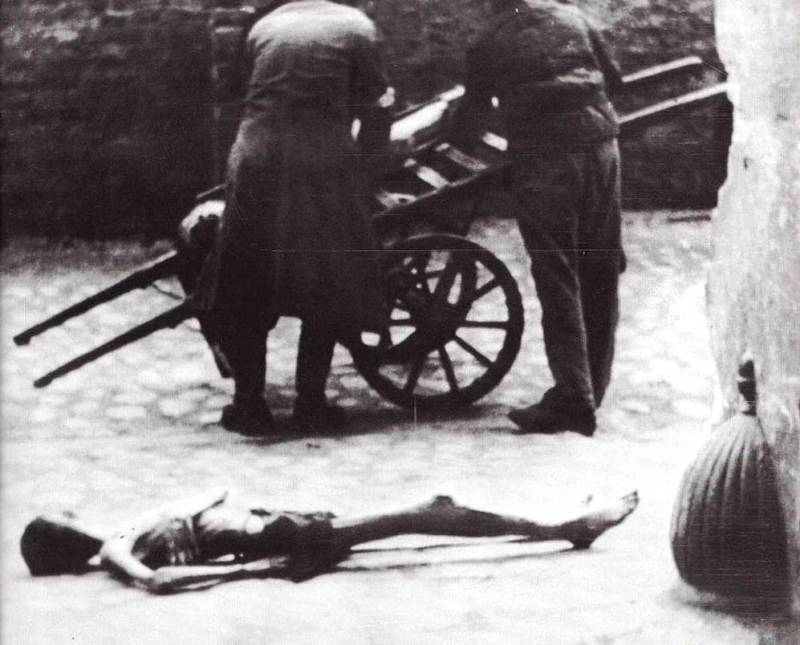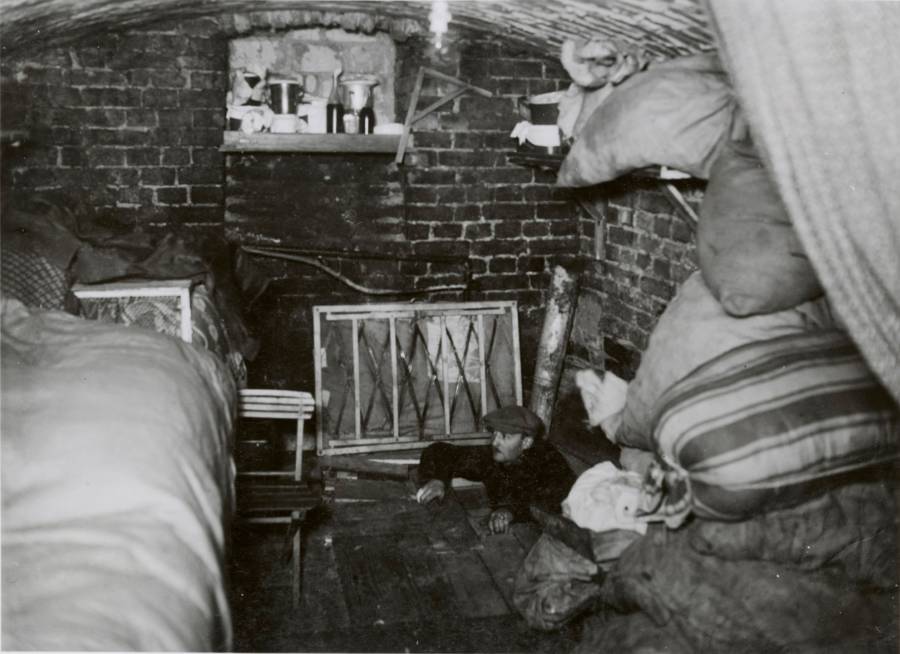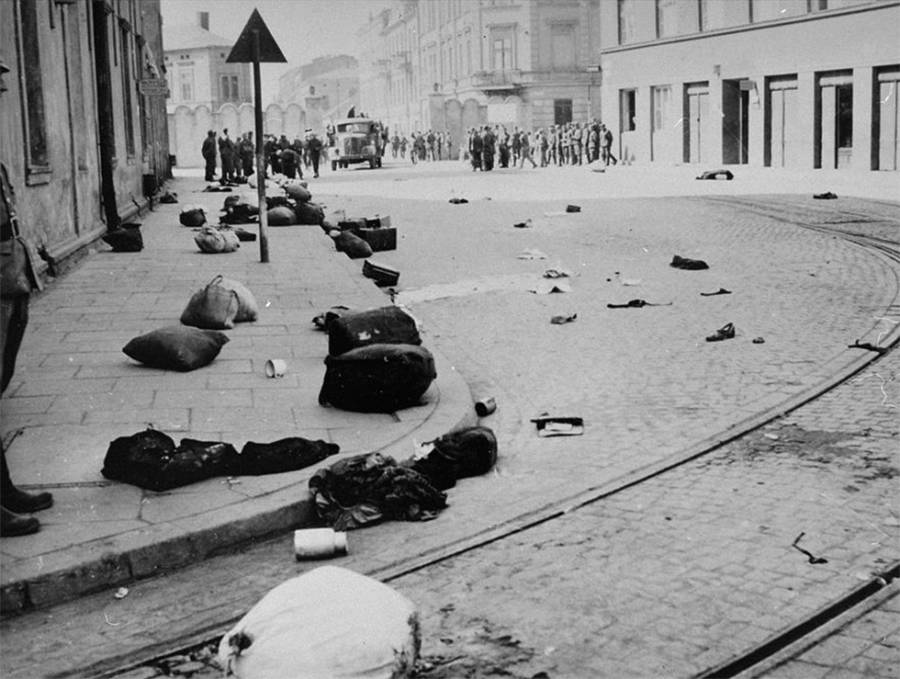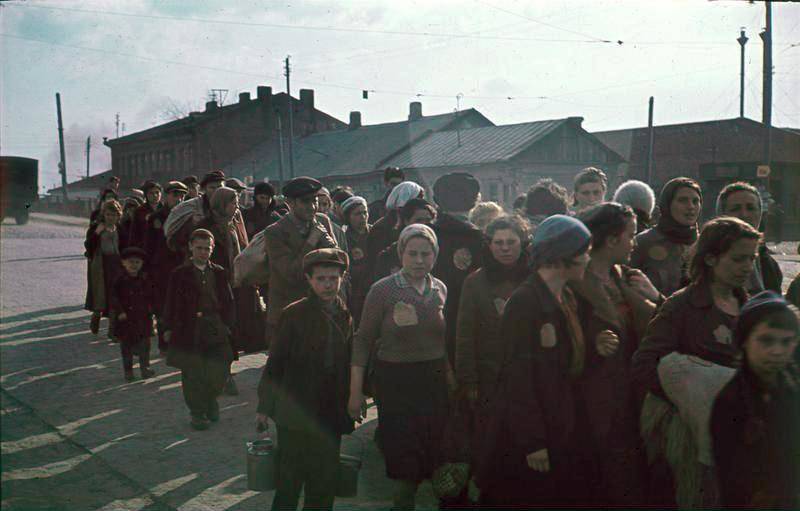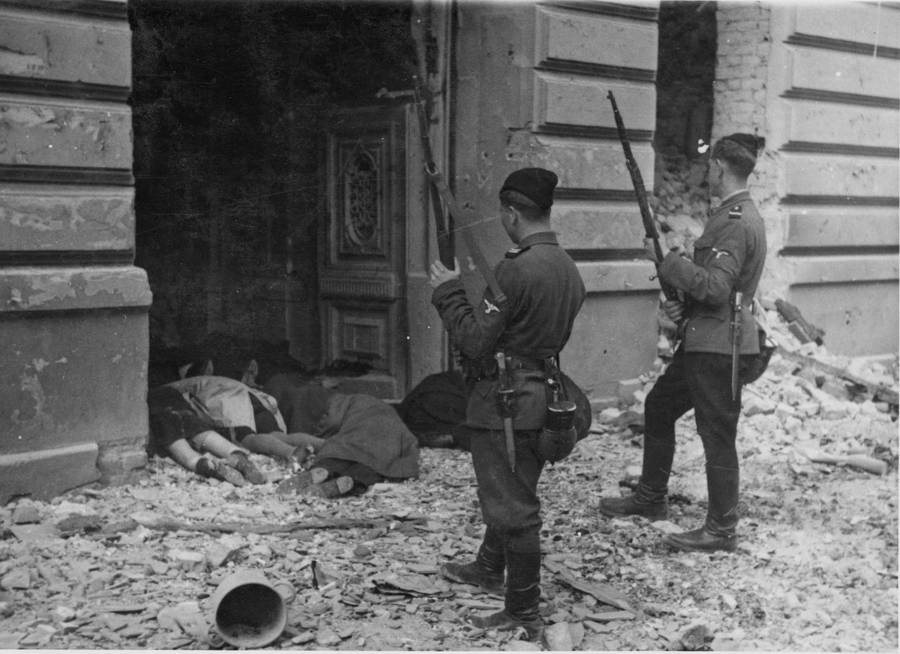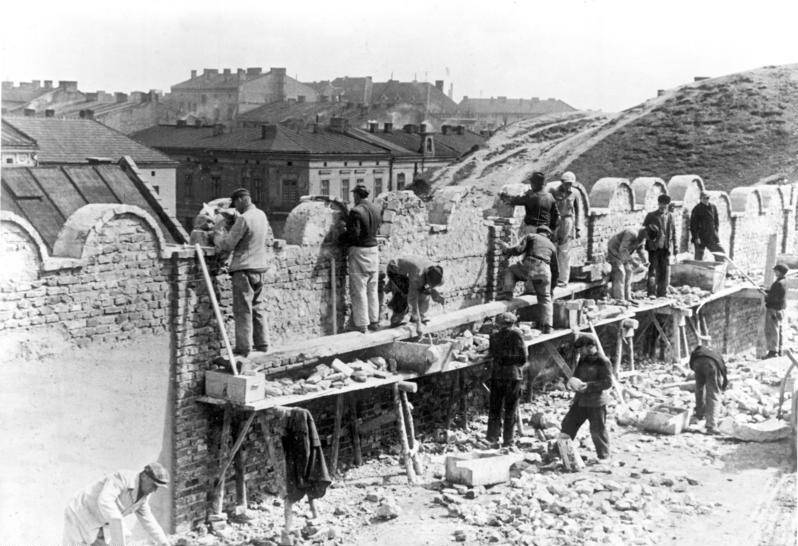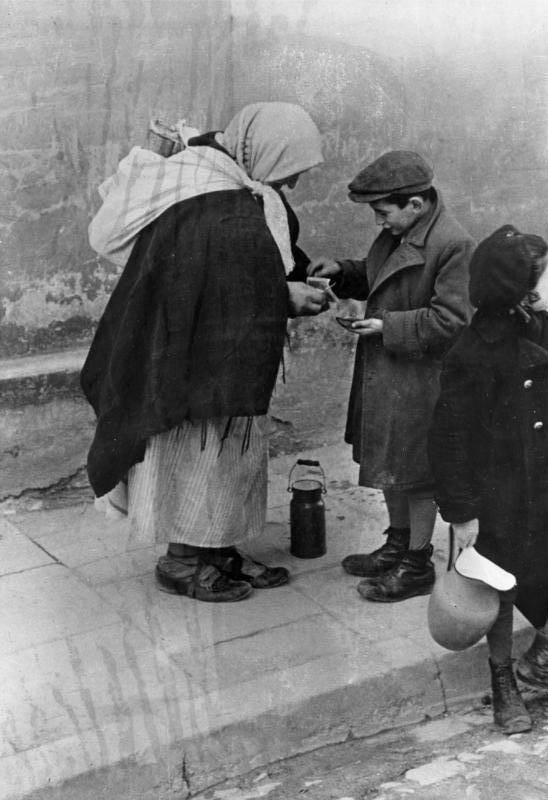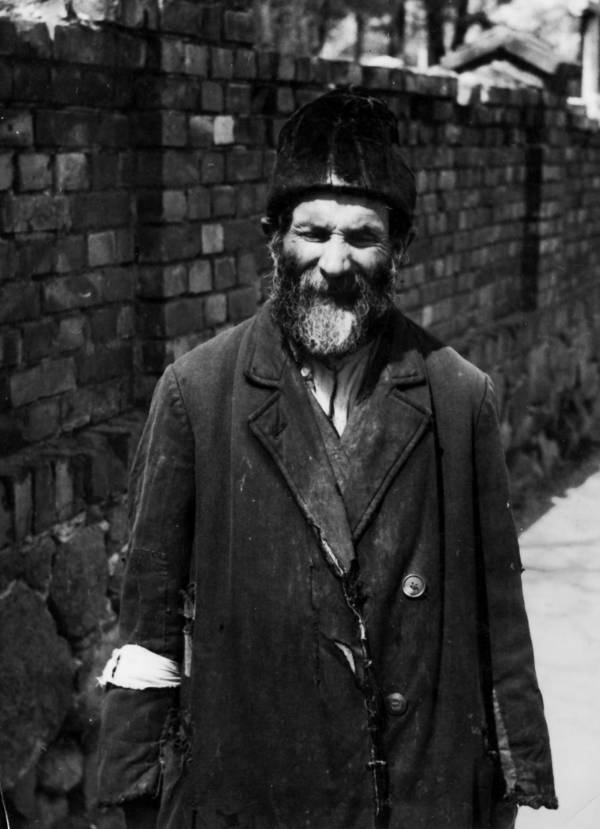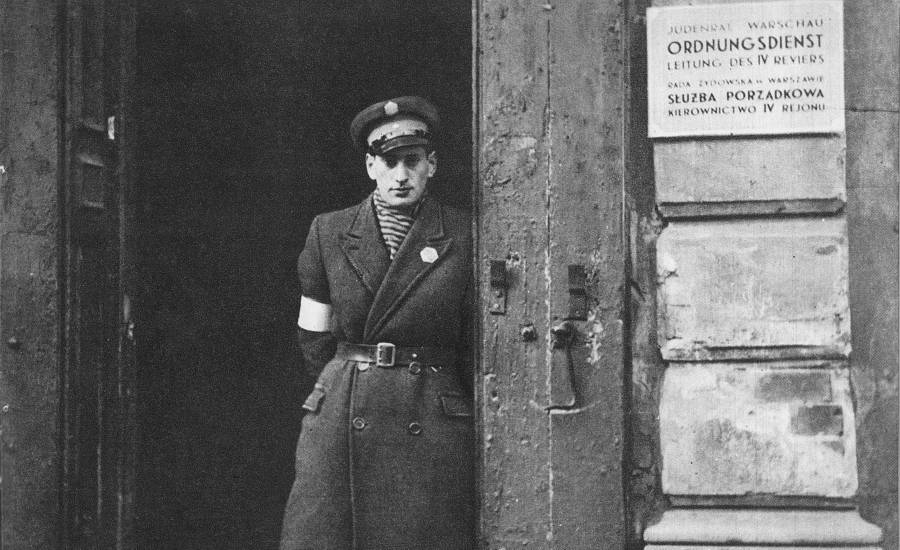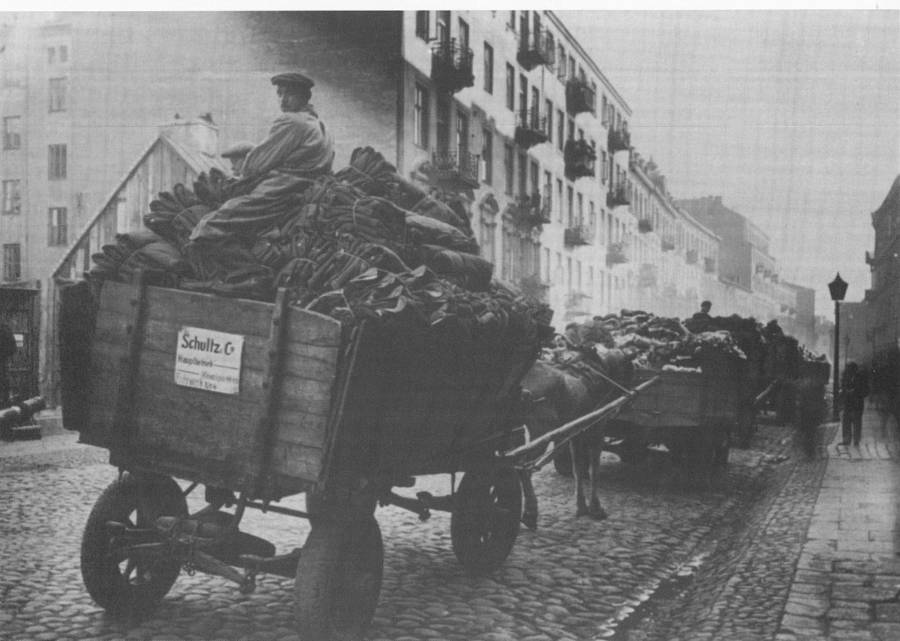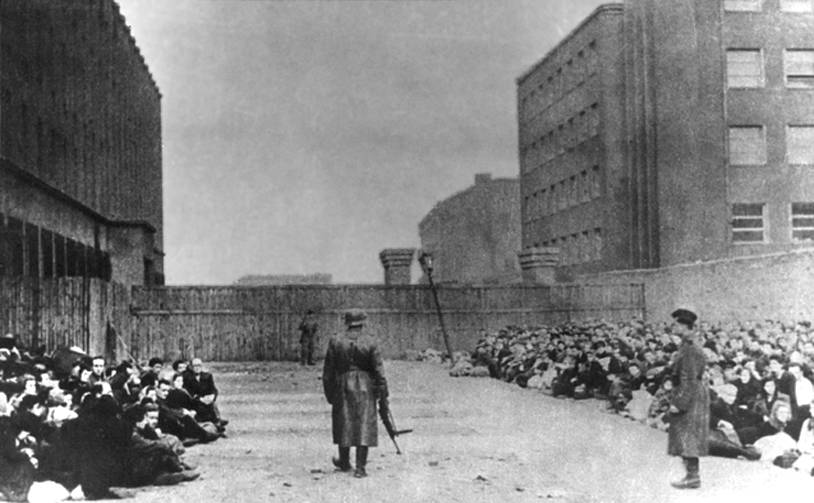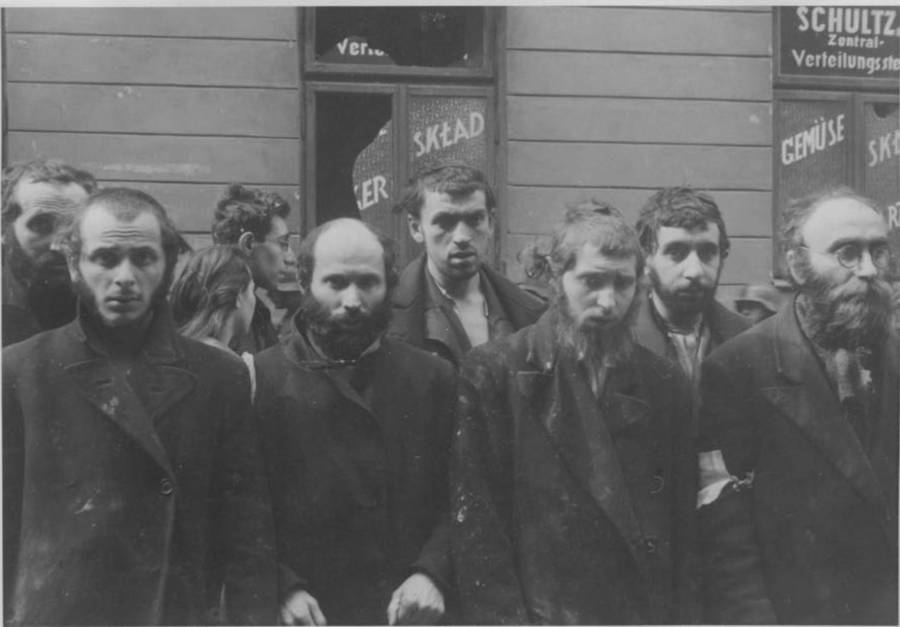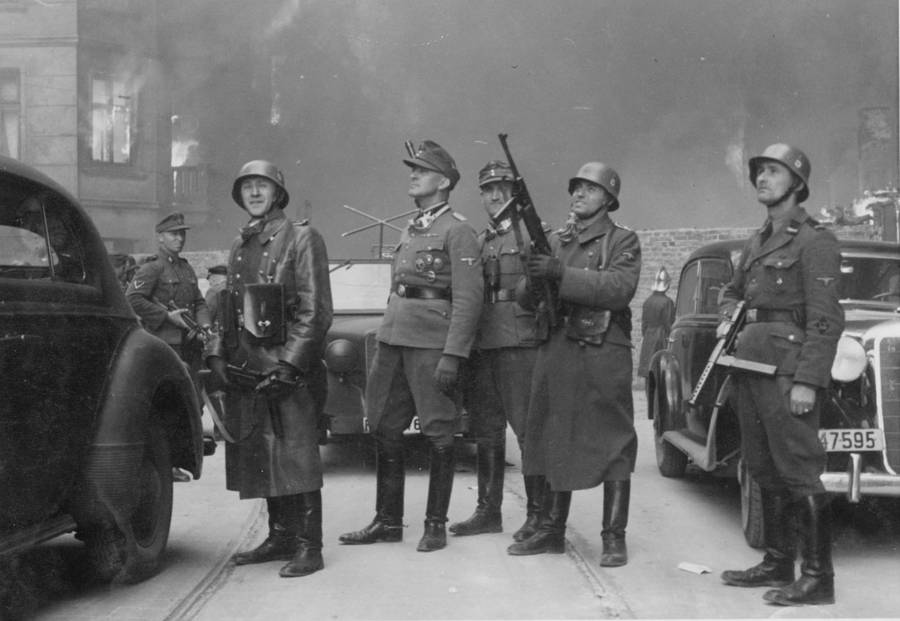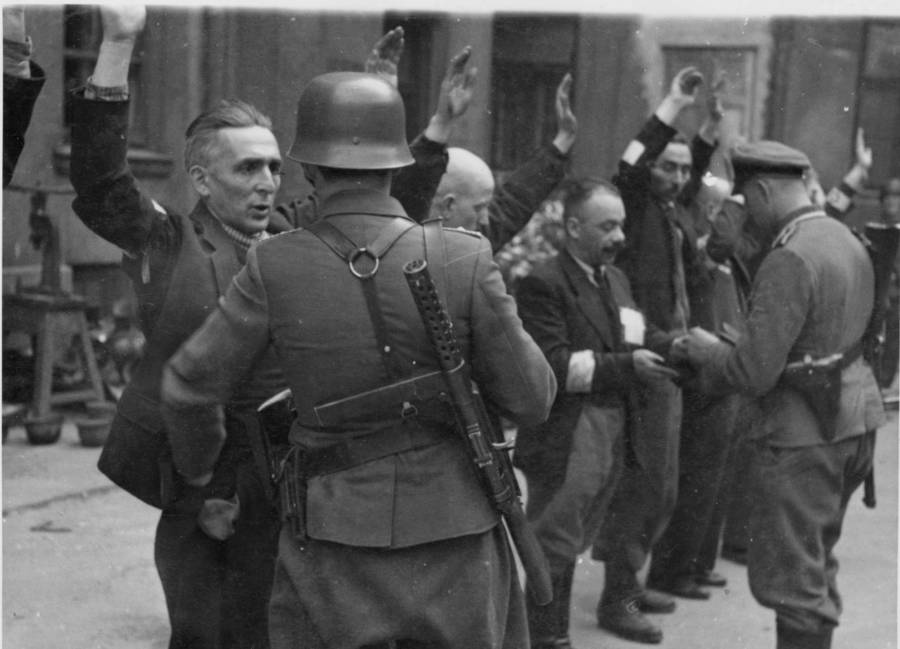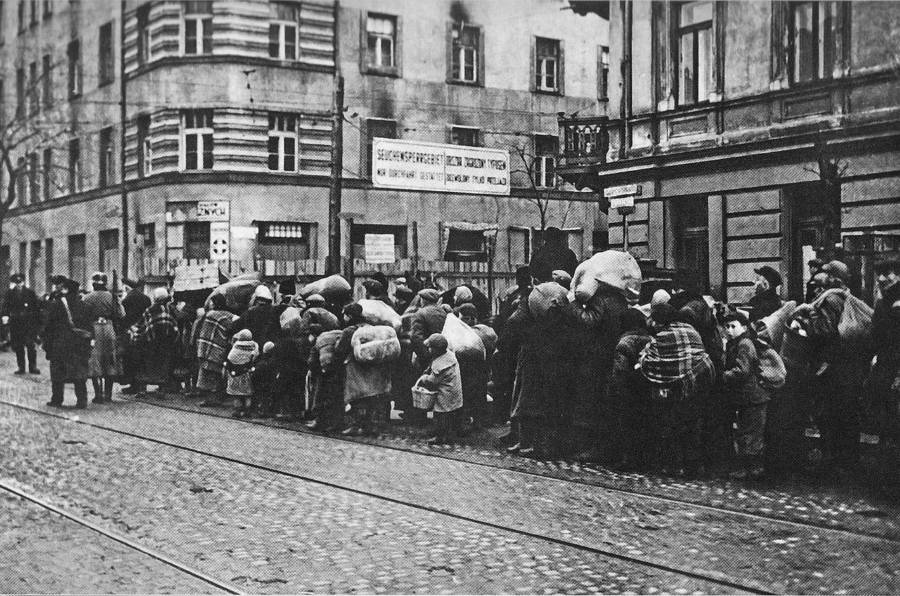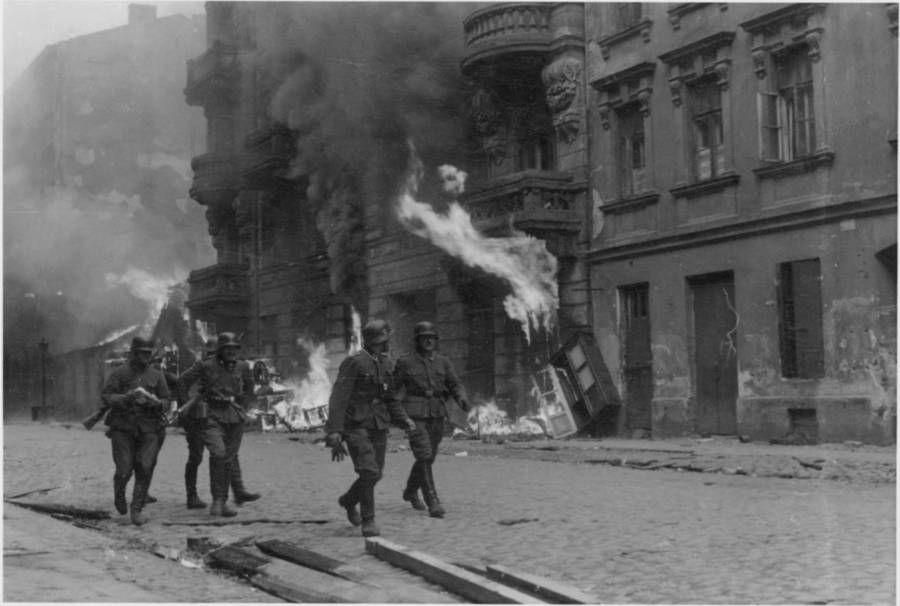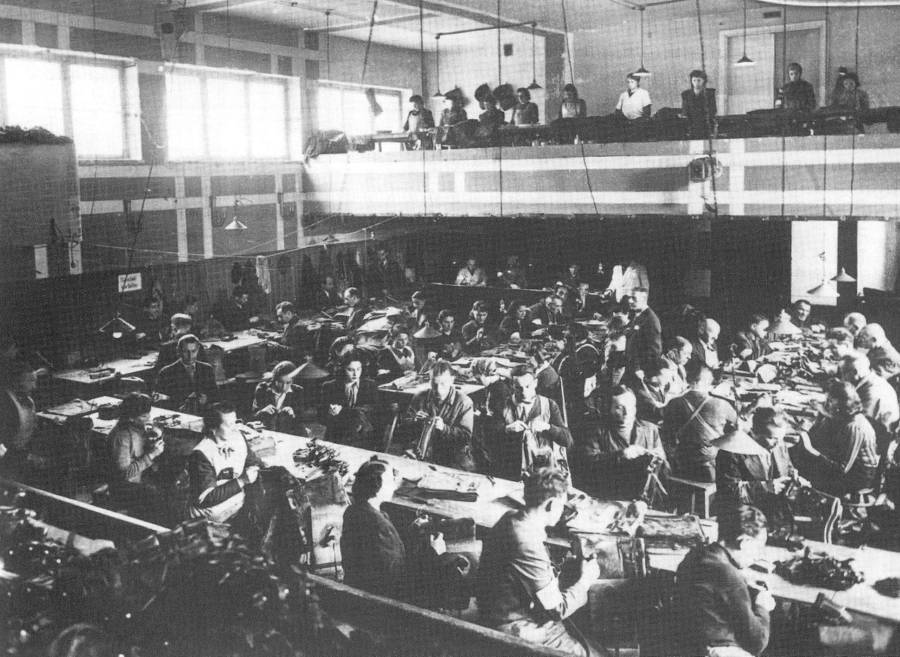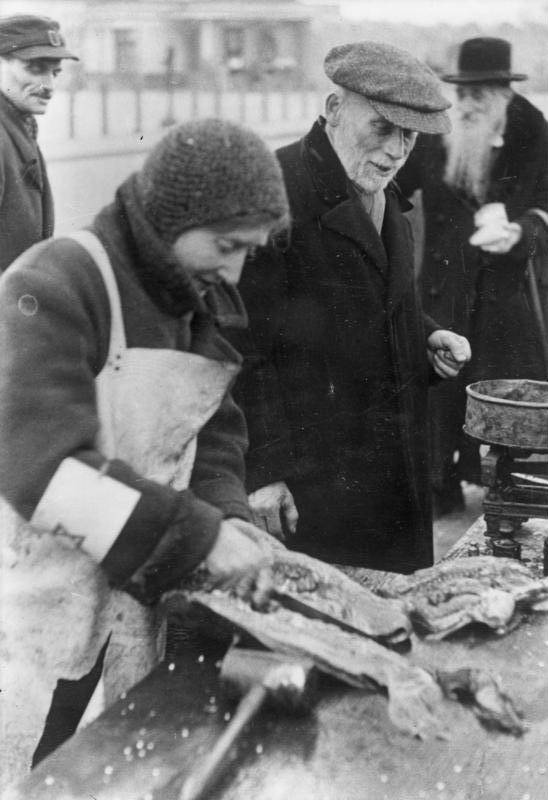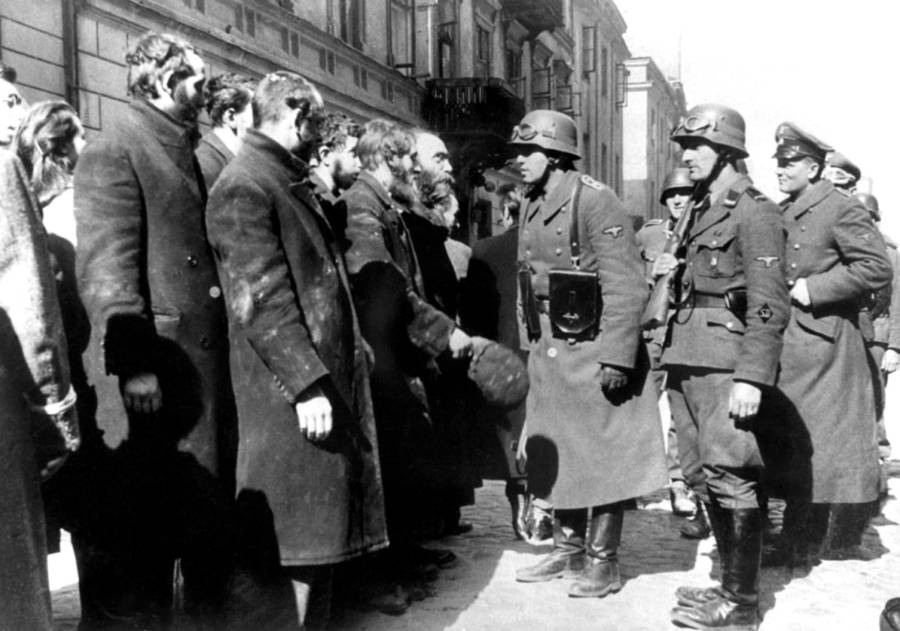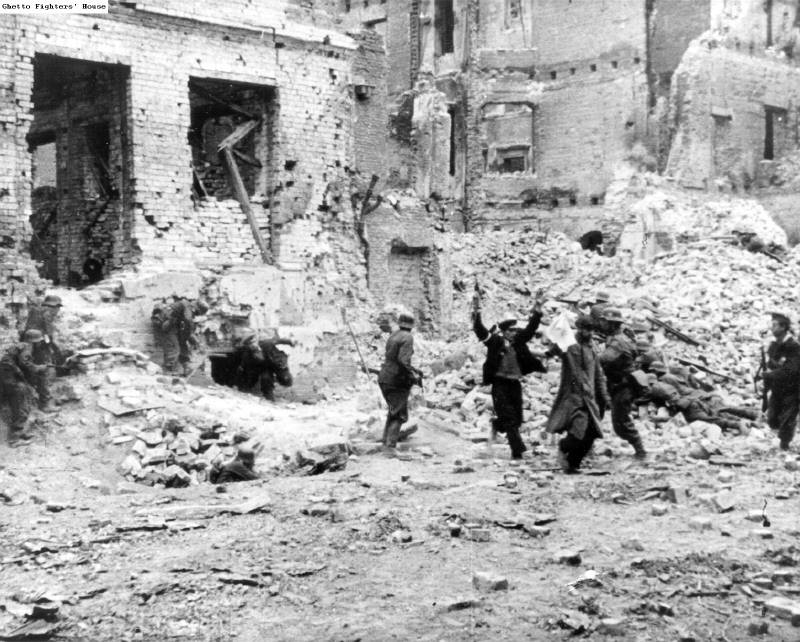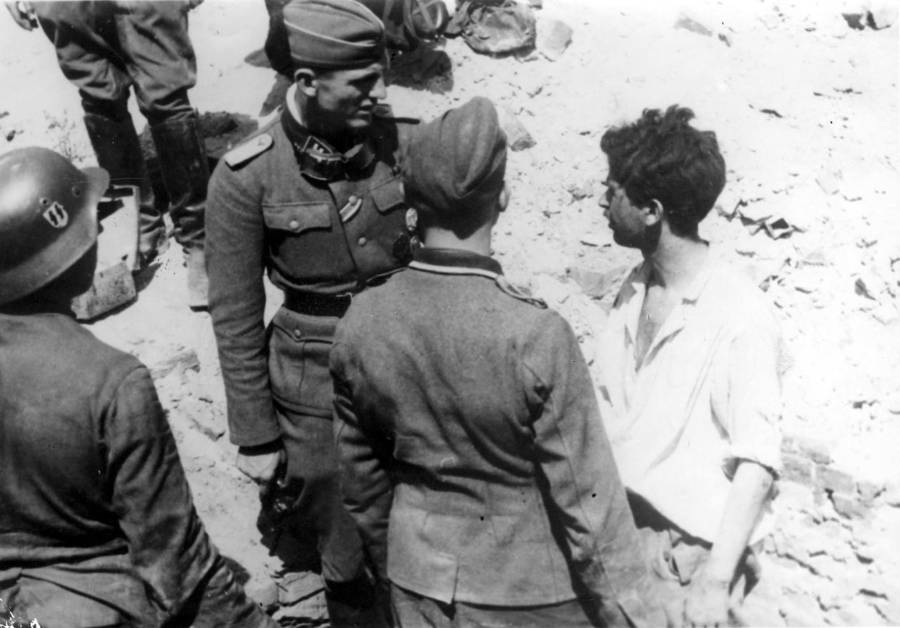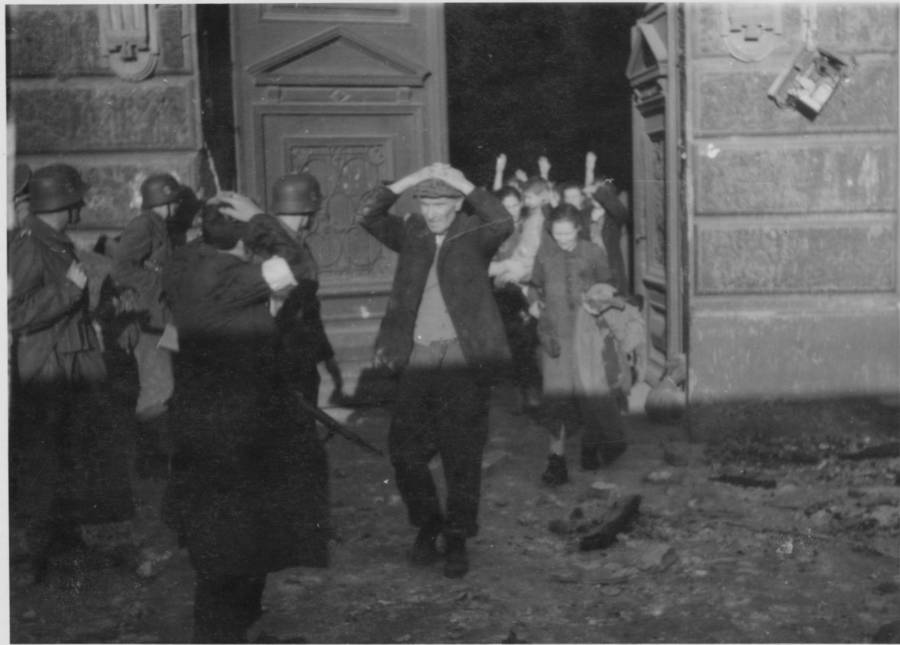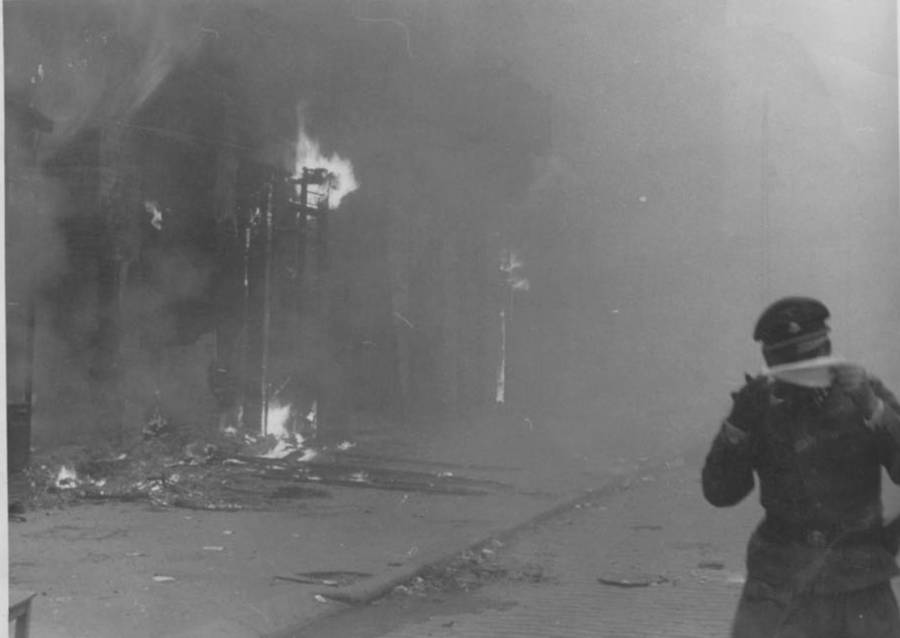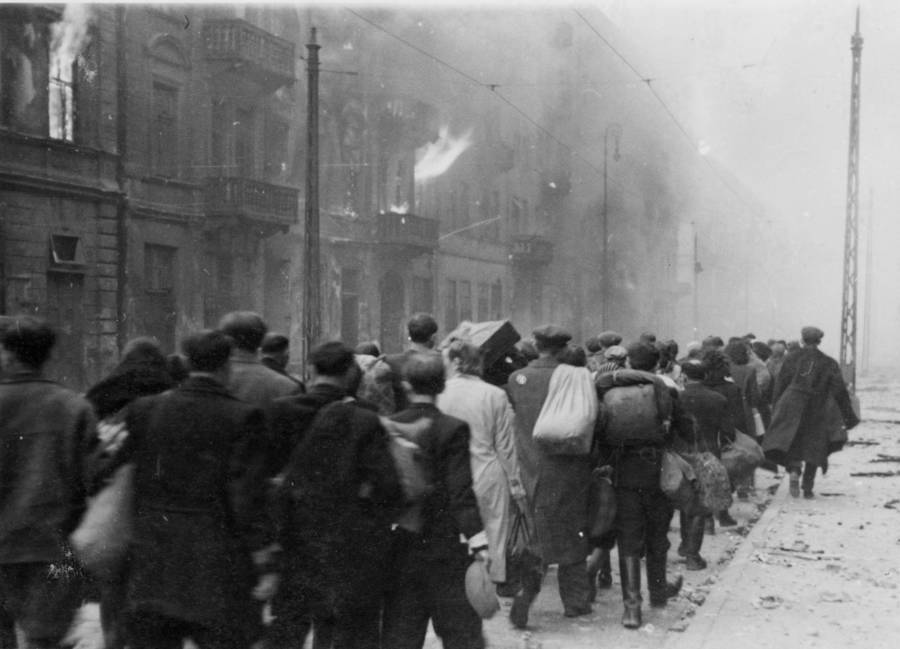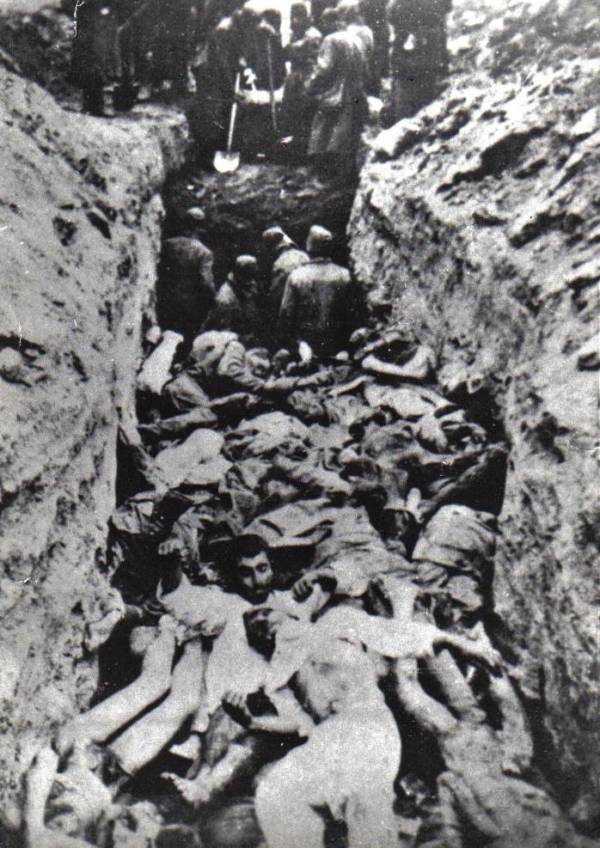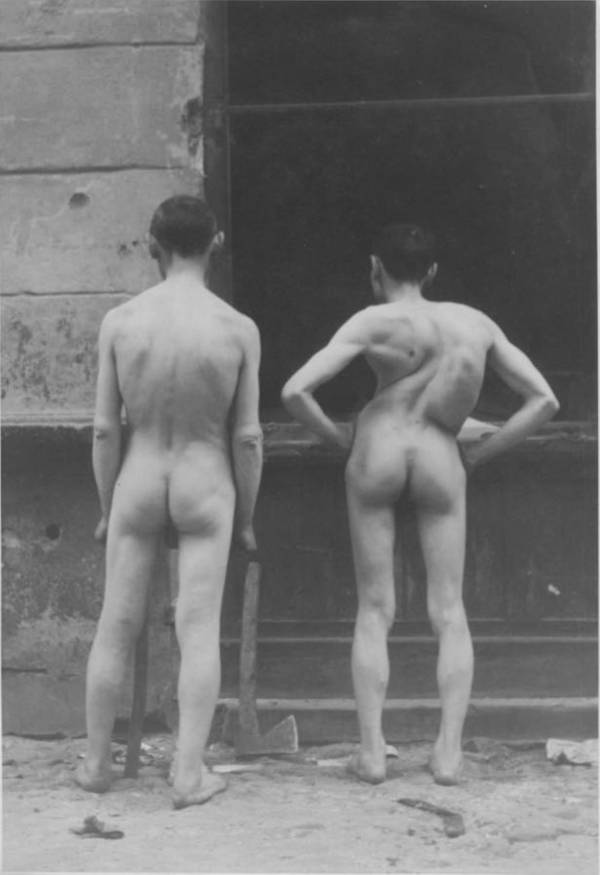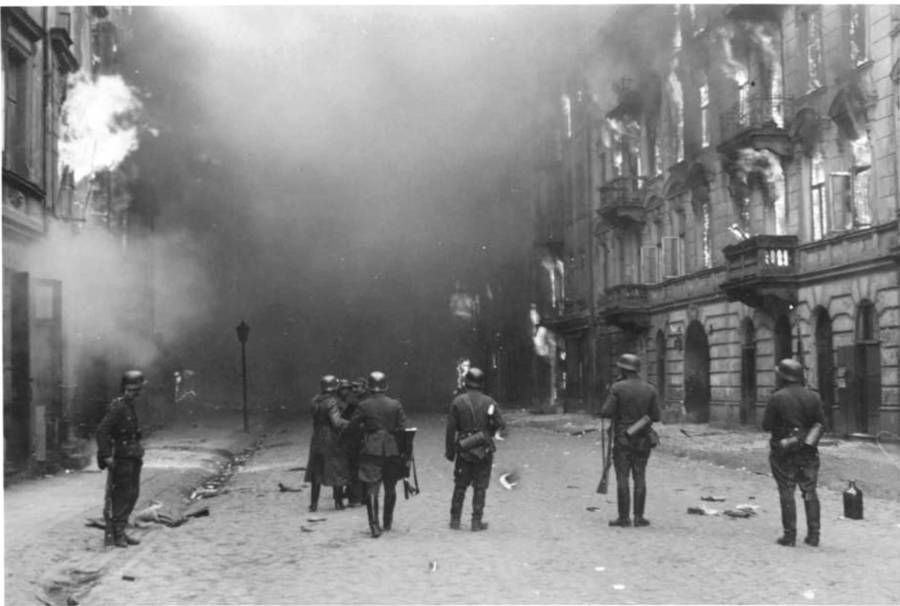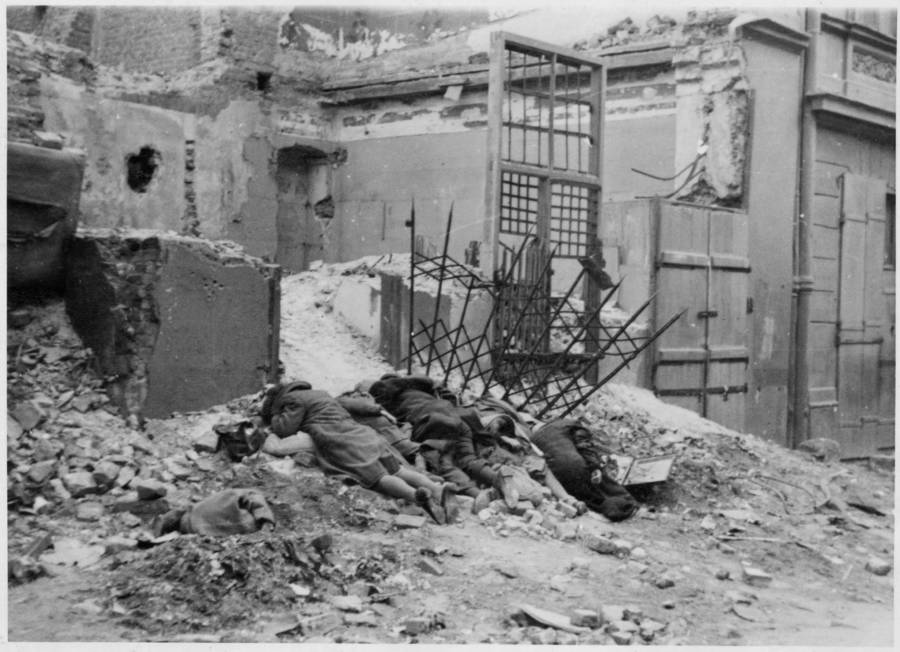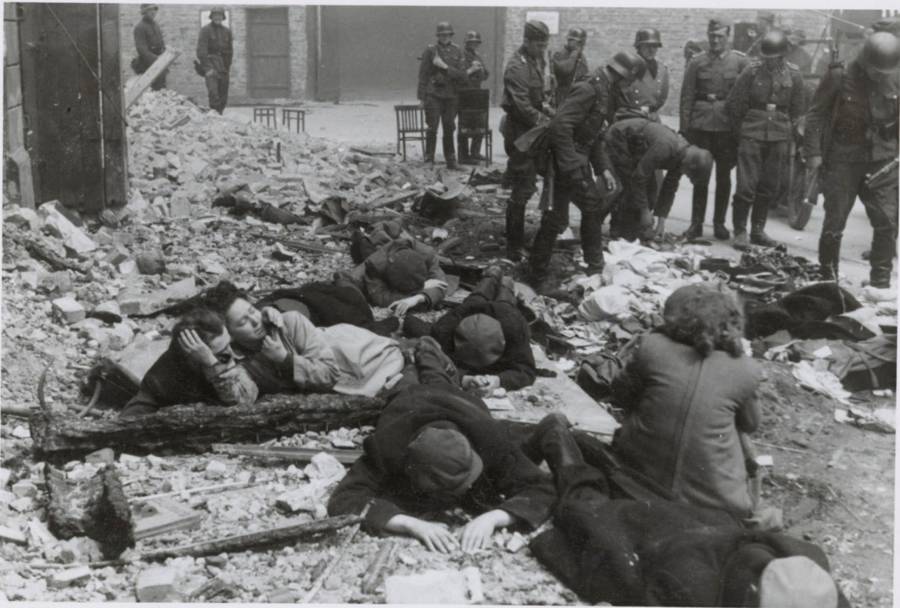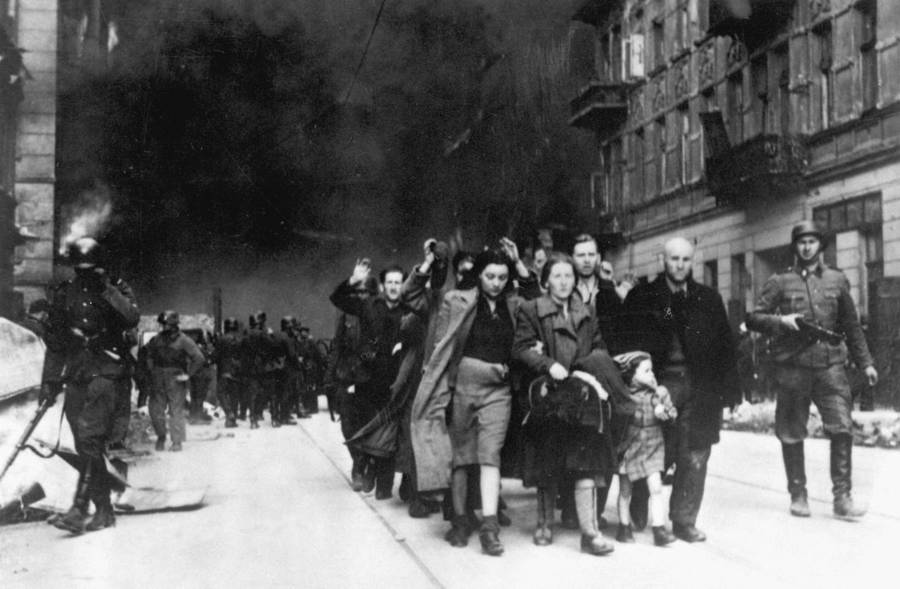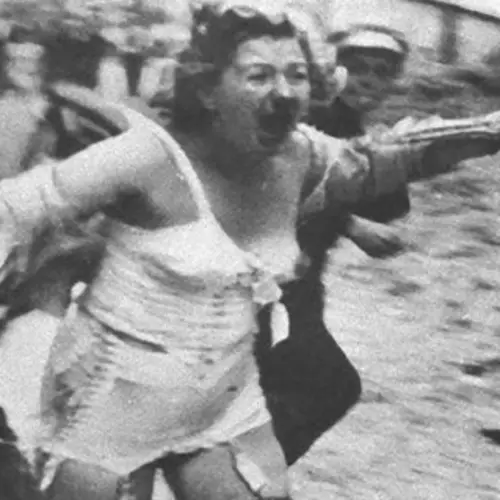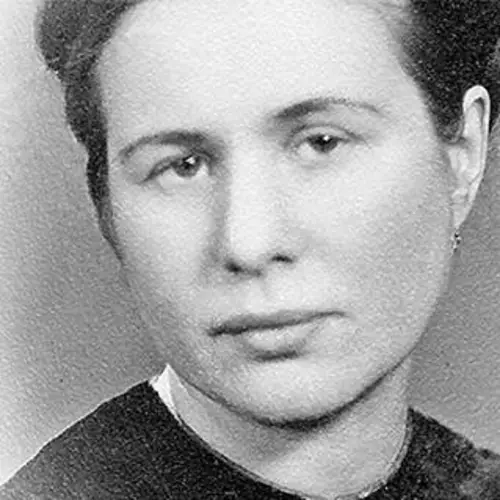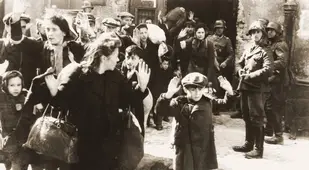1 of 59
Polish Jews are forced out of hiding by the Nazis during the Warsaw ghetto uprising.
Warsaw, Poland. May 1943.Wikimedia Commons
2 of 59
Starving children huddle for warmth inside the Warsaw ghetto.
Warsaw, Poland. Circa 1940-1943.Wikimedia Commons
3 of 59
Jewish children climb up to sneak a peek of what's happening on the other side of the ghetto wall.
Warsaw, Poland. Circa 1941.Wikimedia Commons
4 of 59
A boy holds up a sign labelling him as a Jew.
Warsaw, Poland. Circa 1940-1941.Wikimedia Commons
5 of 59
Very young Ukrainian nationalists, in cooperation with the Nazi SS and armed with clubs, chase a Jewish woman through the streets of the Lviv ghetto, where at least 6,000 Jews were killed by militias and Nazi forces.
Lviv, Poland. 1941.
6 of 59
A dead man lies in the street, surrounded by a crowd of people, in the Warsaw ghetto.
Warsaw, Poland. Circa 1940.Imagno/Getty Images
7 of 59
A woman dangles from a balcony of a burning building during the Warsaw ghetto uprising, desperately trying to escape with her life.
Warsaw, Poland. April or May 1943.Wikimedia Commons
8 of 59
Jewish Resistance fighters, trying to keep their families from being deported to the death camps, are caught by the SS. In the original caption, the SS labelled them "bandits" for trying to avoid the death camps.
Warsaw, Poland. April or May 1943.Wikimedia Commons
9 of 59
A boy sits in the street in the Warsaw ghetto.
Warsaw, Poland. February 1941.Joe J. Heydecker/Galerie Bilderwelt/Getty Images
10 of 59
Jews are lined up against the ghetto wall to be searched.
Warsaw, Poland. April or May 1943.Wikimedia Commons
11 of 59
An emaciated corpse, likely dead from hunger, is collected off the streets.
Warsaw, Poland. Circa 1941-1942.Wikimedia Commons
12 of 59
A Jewish man is forced out of hiding during the Warsaw ghetto uprising.
Warsaw, Poland. April or May 1943.Wikimedia Commons
13 of 59
A Jewish man crawls out of his hiding place in the floor.
Warsaw, Poland. April or May 1943.Wikimedia Commons
14 of 59
Krakow after the deportation of the Jewish population. Their meager possessions litter the streets.
Krakow, Poland. 1943.Wikimedia Commons
15 of 59
A housing block burns during the suppression of the Warsaw ghetto uprising.
Warsaw, Poland. April or May 1943.Wikimedia Commons
16 of 59
The women and children of the Minsk Ghetto walk down the streets, the star of David marking them as Jews.
Minsk, Belarus. Circa 1941.Wikimedia Commons
17 of 59
Nazi soldiers stand over the dead bodies of Jewish civilians they have shot dead.
Warsaw, Poland. April or May 1943.Wikimedia Commons
18 of 59
Building the wall to the Krakow ghetto.
Krakow, Poland. May 1941.Wikimedia Commons
19 of 59
A woman smuggles contraband milk into the ghetto and sells it to a starving child.
Krakow, Poland. May 1941.Wikimedia Commons
20 of 59
A dead body lies on the streets of the Warsaw ghetto.
Warsaw, Poland. Circa 1940-1943.Wikimedia Commons
21 of 59
An elderly man living inside of a ghetto.
Warsaw, Poland. Circa 1940-1943.Wikimedia Commons
22 of 59
Carts full of corpses are carried off to the cemetery.
Warsaw, Poland. Circa 1941-1942.Wikimedia Commons
23 of 59
A Jewish policeman, conscripted by the Nazis to constrict the freedoms of his own people, stands watch by a doorway.
Warsaw, Poland. Circa 1940-1943.Wikimedia Commons
24 of 59
A cart full of clothes rolls through the Warsaw ghetto.
Warsaw, Poland. Circa 1942-1943.Wikimedia Commons
25 of 59
Captured Jews are marched off for deportation.
Warsaw, Poland. April or May 1943.Wikimedia Commons
26 of 59
Jews sit and await deportation to the death camps.
Warsaw, Poland. April or May 1943.Wikimedia Commons
27 of 59
A man comes out of hiding with his hands up.
Warsaw, Poland. April or May 1943.Wikimedia Commons
28 of 59
Jewish rabbis are rounded up by SS officers.
Warsaw, Poland. April or May 1943.Wikimedia Commons
29 of 59
SS Officers enter Warsaw to shut down an uprising.
Warsaw, Poland. April or May 1943.Wikimedia Commons
30 of 59
The workers of a forced labor factory, where Jewish slaves were forced to make helmets for the Nazis, learn that they will not be spared.
Warsaw, Poland. April or May 1943.Wikimedia Commons
31 of 59
Polish families being deported into the Warsaw Ghetto.
Warsaw, Poland. Circa 1940-1942.Wikimedia Commons
32 of 59
Nazis patrol the burning ghetto of Warsaw.
Warsaw, Poland. April or May 1943.Wikimedia Commons
33 of 59
A Polish police officer checks the IDs of two Jewish men.
Krakow, Poland. Circa 1939-1945.Wikimedia Commons
34 of 59
Jewish laborers work inside a sweatshop.
Warsaw, Poland. Circa 1942-1943.Wikimedia Commons
35 of 59
Inside of a sweatshop in a Jewish ghetto.
Warsaw, Poland. Circa 1939-1945.Wikimedia Commons
36 of 59
A Jewish doctor replaces his sign, on orders from the Nazis, to one written in Hebrew script and displaying the Star of David.
Krakow, Poland. May 1941.Wikimedia Commons
37 of 59
A fish stall inside of the Warsaw ghetto, during the early days of the Holocaust.
Warsaw, Poland. May 1941.Wikimedia Commons
38 of 59
The Nazis crack down on smuggling to keep food from getting into the ghettos.
Krakow, Poland. May 1941.Wikimedia Commons
39 of 59
SS officers interrogate men inside the Warsaw ghetto.
Warsaw, Poland. April or May 1943.Wikimedia Commons
40 of 59
A man is dragged out of hiding as the SS comes in to force the people of the Warsaw ghetto into the death camps.
Warsaw, Poland. April or May 1943.Wikimedia Commons
41 of 59
Jews put into forced labor work on the railway.
Minsk, Belarus. February 1942.Wikimedia Commons
42 of 59
The SS opens the underground bunkers where some have hidden to avoid being dragged out of the ghetto and into the death camps.
Warsaw, Poland. May 1943.Wikimedia Commons
43 of 59
Residents of the Warsaw ghetto sit on the curb, awaiting their fate.
Warsaw, Poland. April or May 1943.Wikimedia Commons
44 of 59
An SS lieutenant interrogates a man in the Warsaw ghetto.
Warsaw, Poland. May 1943.Wikimedia Commons
45 of 59
Nazi soldiers discuss how best to evacuate and deport the Jewish workers inside of a factory.
Warsaw, Poland. April 1943.Wikimedia Commons
46 of 59
A family surrenders to the SS.
Warsaw, Poland. April or May 1943.Wikimedia Commons
47 of 59
Men carry off a cart filled with the emaciated, starved corpses of children.
Warsaw, Poland. Circa 1941-1942.Wikimedia Commons
48 of 59
A man covers his mouth with a handkerchief, struggling to breathe through the smoke.
Warsaw, Poland. April or May 1943.Wikimedia Commons
49 of 59
Jews captured during the Warsaw ghetto uprising are marched to a holding area for deportation.
Warsaw, Poland. April or May 1943.Wikimedia Commons
50 of 59
A mass grave outside of a ghetto, where people have been dragged out and shot.
Lenin Zhitkovich, USSR. August 1942.Wikimedia Commons
51 of 59
Two men are stripped naked and photographed by Nazi SS soldiers. The Nazi officer who took the photo gave it the title: "The Dregs of Society."
Warsaw, Poland. April or May 1943.Wikimedia Commons
52 of 59
Nazi officers watch as the Warsaw ghetto burns.
Warsaw, Poland. April or May 1943.Wikimedia Commons
53 of 59
The dead bodies of executed Jews lie in the ruins of the Warsaw ghetto.
Warsaw, Poland. April or May 1943.Wikimedia Commons
54 of 59
The ruins of a ghetto.
Warsaw, Poland. April or May 1943.Wikimedia Commons
55 of 59
A factory is set on fire by the SS in the Warsaw ghetto.
Warsaw, Poland. April or May 1943.Wikimedia Commons
56 of 59
A tram marked with the Star of David. The Jewish population of Warsaw were not allowed on trams without this mark.
Warsaw, Poland. Circa 1941-1942.Wikimedia Commons
57 of 59
The Jews of Krakow are rounded up and deported to extermination camps.
Krakow, Poland. March 1943.Wikimedia Commons
58 of 59
Captured Jews are lead through the burning ghetto in Warsaw. They will be sent to the death camps.
Warsaw, Poland. April or May 1943.Wikimedia Commons
59 of 59
Like this gallery?
Share it:

